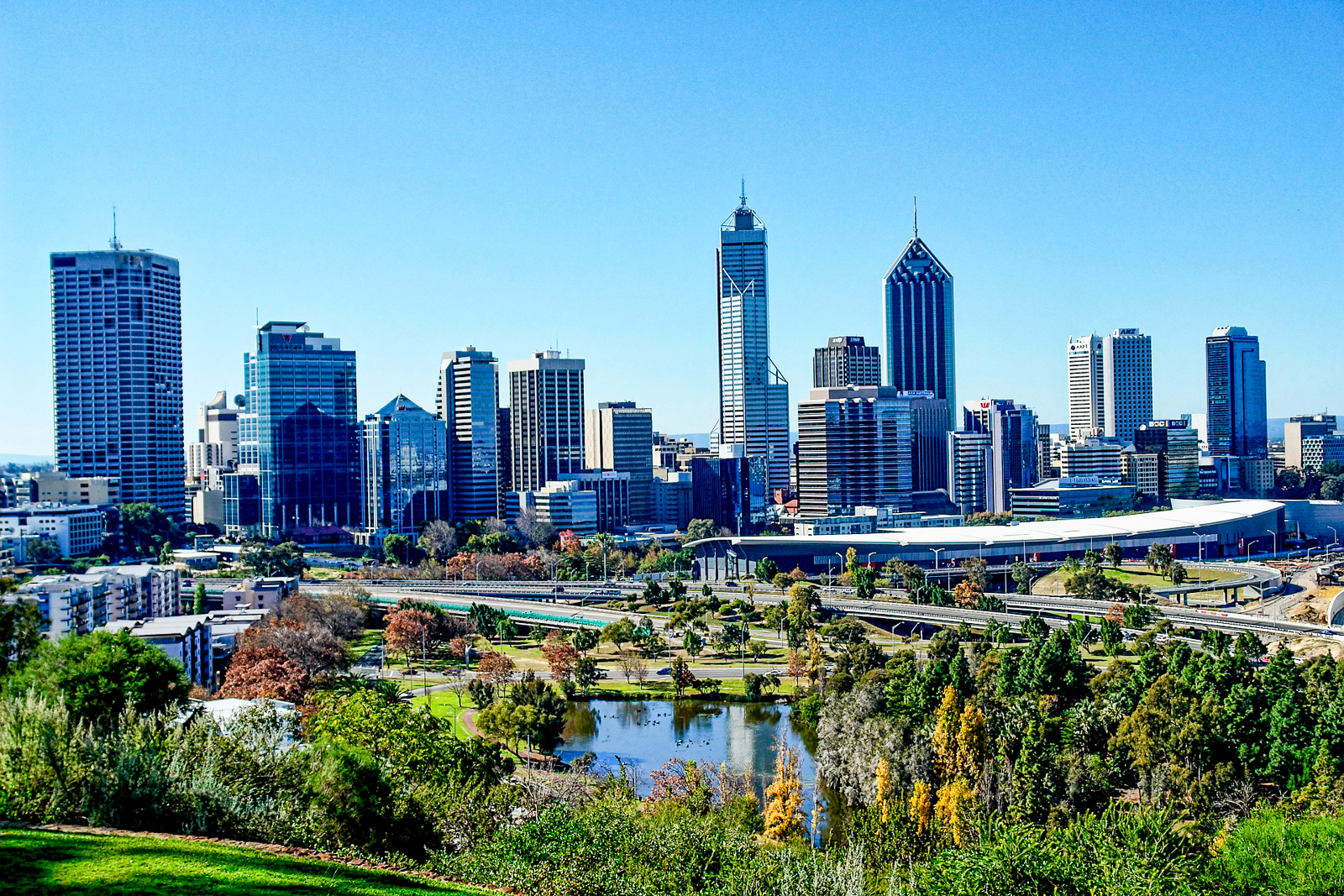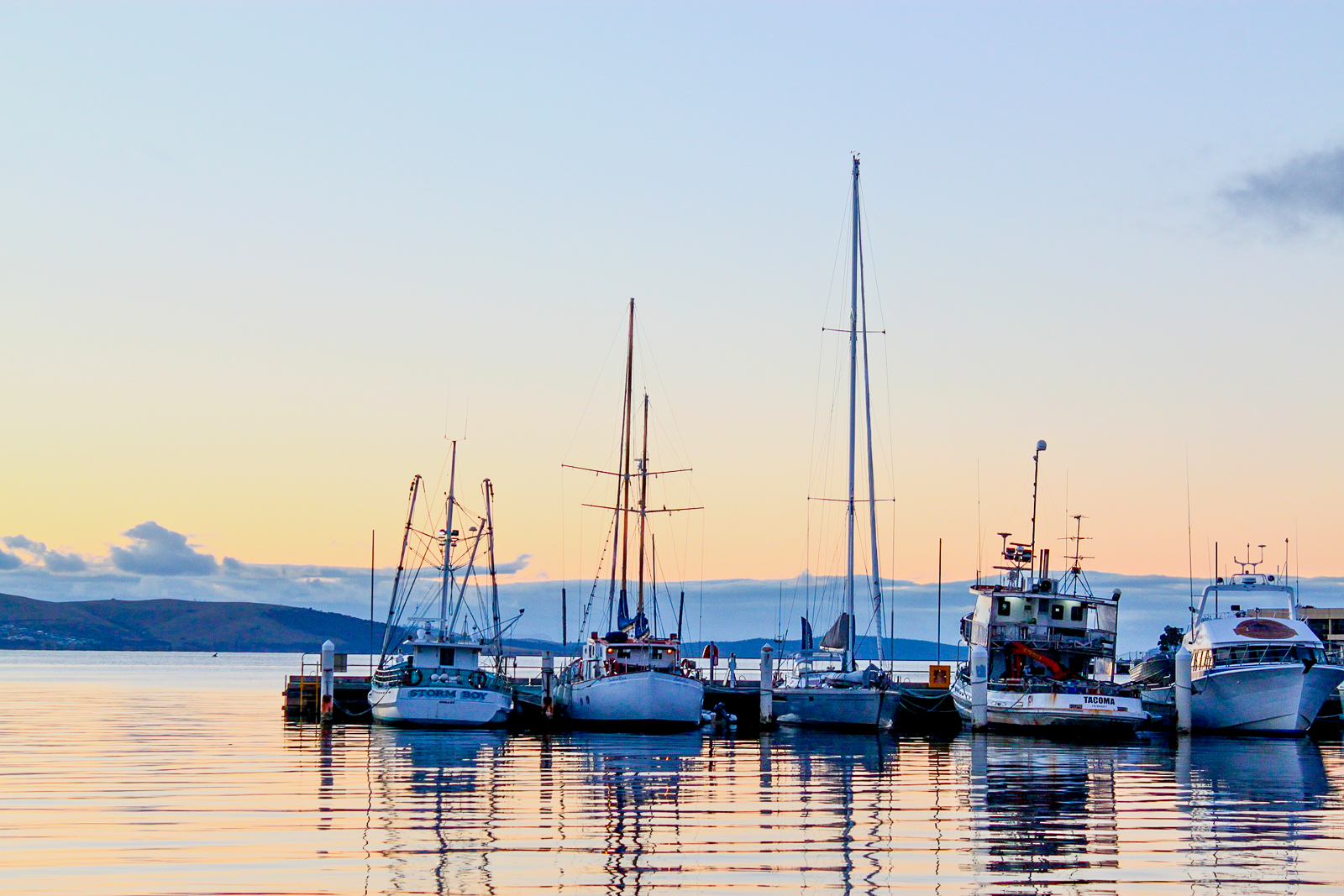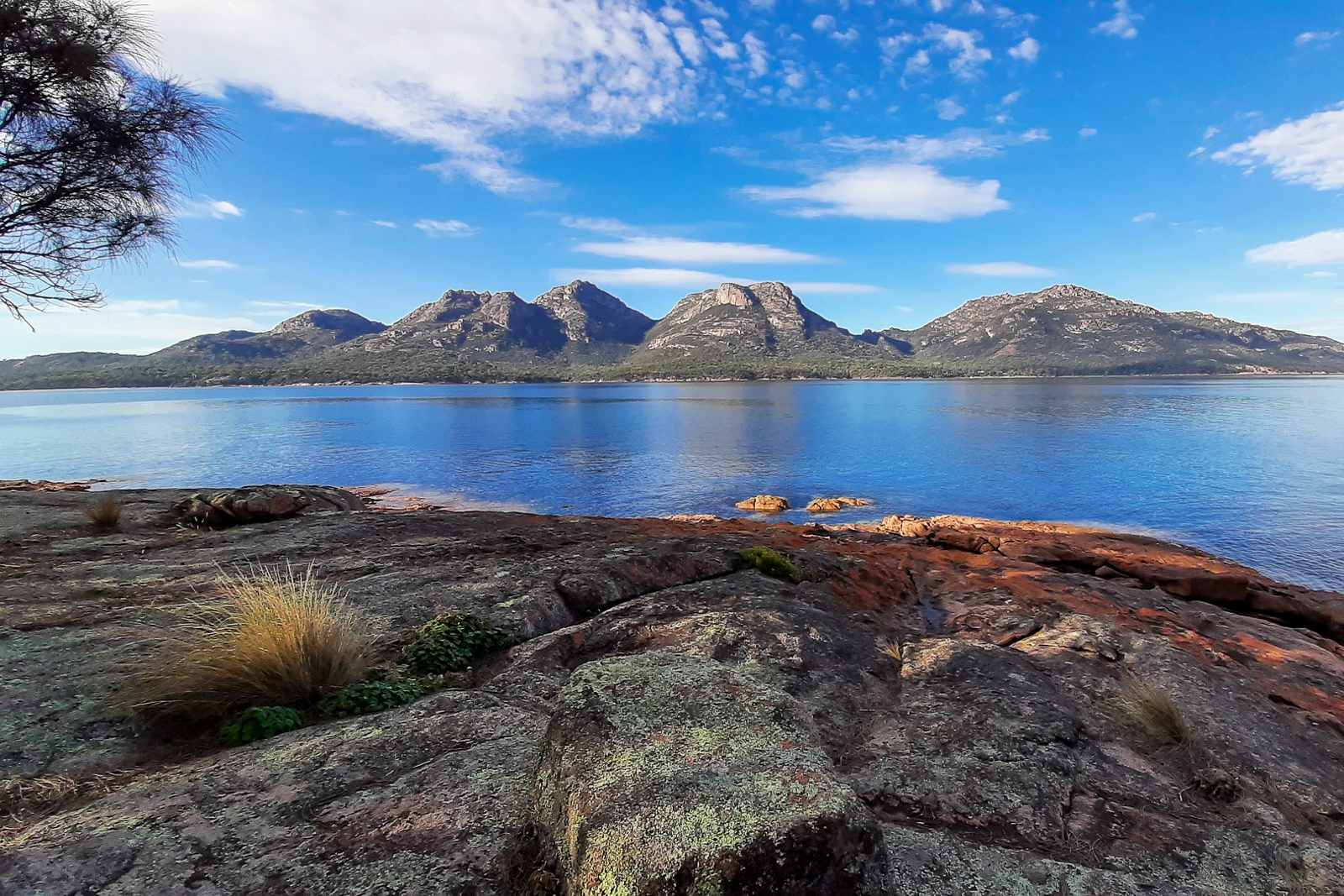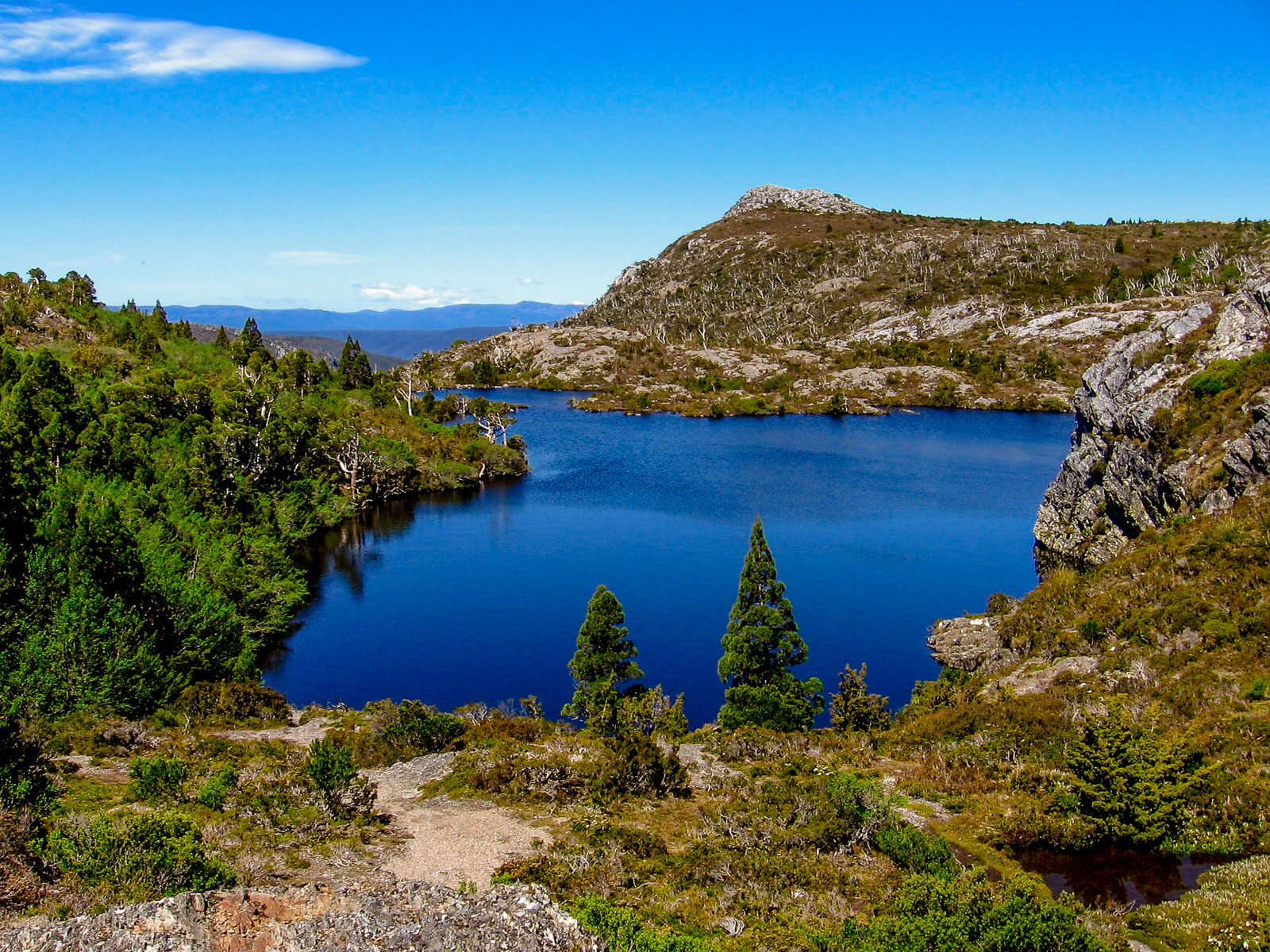From the never ending beaches, super swells and mystical Blue Mountains of New South Wales to laid back luxury living and bountiful vineyards in Western Australia, there's so much to discover in every region of Australia. The only problem is deciding where to start...
NEW SOUTH WALES
SYDNEY

From the iconic opera house to the Sydney Harbour Bridge, the sensational beaches to the cutting-edge food scene, Australia’s laid-back coastal capital has it all. Bondi Beach is the star of the show, attracting surfers and locals who swim in the legendary Icebergs pool (have lunch at the bistro which has knockout views of the action); from here you can also set off on the six-kilometre clifftop Bondi to Coogee walk, which passes the beaches of Bronte and Clovelly. Alternatively, hop on the ferry from Circular Quay to Manly where you’ll find gorgeous Manly Beach (plus boutiques and excellent fine dining restaurants) and, a short walk away, smaller, sheltered Shelly Beach, popular for snorkelling. For a more off-the-beaten track day on the sand, head to Palm Beach, an hour’s drive north from the city centre. One of the best places to stay is the Park Hyatt Sydney, which claims some of the best views of Sydney Harbour Bridge and Opera House.
BACK TO TOP
BLUE MOUNTAINS

A three-hour drive or short helicopter flight from Sydney (the aerial vistas are incredible especially from February to April when the eucalyptus that grows here flowers and creates a blue mist above the mountains), the Blue Mountains region is known for its rural bushland, charming towns and ancient aboriginal rock art. If you’re travelling by car, it’s worth stopping off en route at Echo Point in Katoomba for panoramic views of The Three Sisters landmark. An unusual rock formation, it represents three sisters who, according to Aboriginal legend, were turned to stone. It’s especially pretty at sunset and in the evenings, when it’s lit up. Wildlife in the area includes tiger quoll, yellow-bellied gliders (possums), Blue Mountain water skinks, dingos, koalas, kangaroos and wombats. Set within 7,000 acres of bushland with a fine dining restaurant, luxury villas and a spa, One&Only Emirates Wolgan Valley is a standout resort in this region.
BACK TO TOP
LORD HOWE ISLAND

A two-hour flight from Brisbane, Lord Howe Island in the Tamsan Sea has white-sand beaches, the world’s southernmost coral reef and amazing hiking through subtropical forests and along coastal ridges. Birdwatching and fishing are other popular activities. Undeveloped (only 400 visitors are allowed at one time) and extraordinarily beautiful, we recommend spending three or four days here. Stay at Capella Lodge for fabulous views of Lovers Bay and fascinating marine life.
BACK TO TOP
WESTERN AUSTRALIA
NINGALOO REEF

A UNESCO World Heritage-listed site 1,200km north of Perth, Western Australia’s Ningaloo Reef is renowned for its turquoise lagoons and visiting whale sharks, humpbacks and manta rays. It’s much more accessible than the Great Barrier Reef as here the coral is only three metres from the shore – meaning no long boat trips before you can don your fins and explore the magical underwater world. Unspoilt Coral Bay is an excellent starting point for all kinds of activities, from whale watching trips to diving and a sunset cruise. Check into Sal Salis, an eco-friendly camp which has luxury tents right on the beach.
BACK TO TOP
MARGARET RIVER

Known for its sensational beaches, award-winning wineries and laidback outdoor lifestyle, Margaret River certainly packs a punch. It’s one of the Australia’s top wine regions, famous for cabernet sauvignon and chardonnay: Vasse Felix, is the oldest winery, established in 1967 while Howard Park is the most modern with a building designed by Chinese feng shui expert, Professor Cheng Jian Jun. It is also one of the country’s fastest growing microbrewery destinations. The best beaches are Hamelin Bay (look out for stingrays); Eagle Bay (good for families); Injidup Beach which has a hidden rock pool and, for surfing, Yallingup Beach and Smith’s Beach. It’s a biodiversity hotspot too, as 70 percent of the state's flowering natives are found nowhere else in the world.
BACK TO TOP
PERTH

In contrast to the majority of rural Western Australia, the coastal capital Perth has an urban buzz, with art galleries, historic neighbourhoods and white-sand beaches. For the best city views, head to the top of Mount Eliza. It’s a short ferry ride to tranquil Rottnest Island (or Rotto as its known locally), a protected nature reserve where you can explore by bicycle, swim, snorkel and spot the resident quokkas (short-tailed wallabies). If you have the time, one interesting way to travel from Sydney is on the Indian Pacific railway. The journey takes around four days but you’ll pass through Adelaide and the Nulabourne Plain, a small town which has just three inhabitants. A great slo-mo way to appreciate the vastness of this region. Stay at COMO The Treasury - formerly thesatte offices, transformed into contemporary retreat with fabulous rooftop restaurant and, as one would expect of COMO, an indulgent spa.
BACK TO TOP
NORTHERN TERRITORIES
AYERS ROCK / ULURU

One of the greatest natural wonders of the world, Ayers Rock/ Uluru (in 1993 it was given the dual name) is a spectacular 550-million-year-old monolith in Australia’s Northern Territory. Walk the trails around the base and, if you can, time your visit for sunset when the brown sandstone appears to turn red. The only place to stay is Longtitude 131, a luxury camp dotted among rust-coloured dunes with permanent tent-like structures that look over Ayers Rock/Uluru. Signature experiences include a guided walk that begins at the caves around Ayers Rock/ Uluru, where the walls are adorned with Aboriginal artworks, and ends at Kantju Gorge, a reserve that leads to a waterhole used by the locals for swimming.
BACK TO TOP
KAKADU NATIONAL PARK

A three-hour drive from Darwin – the gateway to the northern territories – Kakadu is one of the largest national parks in Australia and around half the size of Switzerland. Much of the park is Aboriginal land and contains incredible rock art that dates back 20,000 years. It’s also a fantastic setting for outdoor adventures – from birdwatching (it’s home to around 280 different types of birds) to barramundi fishing and hiking to see waterfalls. Our top pick of where to stay is Bamarru Plains, a safari lodge on the Mary River, on the edge of Kakadu National Park.
BACK TO TOP
QUEENSLAND
THE GREAT BARRIER REEF

The world’s largest coral reef system, and perhaps its most famous, the Great Barrier Reef comprises over 3,000 individual reef systems (to understand its vastness and for a birds’ eye view, take a scenic helicopter flight over it). Charter a private boat charter for the day: it takes three hours to reach the reef from Cairns, plus swimming stops on the way. The best time to visit for visibility is between May and October. Right next to the reef is the Whitsunday Islands: from here you can visit Heart Reef, relax on pristine Whitehaven Beach on Whitsunday Island itself, and of course, go snorkelling and diving. At the northern end of the Great Barrier Reef is Lizard Island – a fantastic place to stay just an hour’s flight from Cairns with some of the best snorkelling spots right on the doorstep. Further south, Qualia is a sophisticated adult-only hideaway on Hamilton Island, perfect for couples and honeymooners - don't miss the exquisite tasting menu in the Long Pavilion.
BACK TO TOP
DAINTREE NATIONAL PARK

North of Cairns, the Daintree National Park comprises the Mossman Gorge and Cape Tribulation – forest-clad mountains that slope down to meet the ocean. The hiking is excellent, whether you choose a tranquil river trail alongside crystal-clear water that gushes over granite boulders, say, or a circuit around the base of Mount Alexandra that crosses several rainforest creeks. Recently renovated Silky Oaks lodge makes a great base for exploring the rainforest (their guides are excellent), as well as activities such as kayaking and white-water rafting.
BACK TO TOP
SOUTH AUSTRALIA
Make Adelaide your launch pad for some of the best off-the-beaten track experiences in South Australia.
EYRE PENINSULA

The under-the-radar Eyre Peninsula is known for its excellent seafood restaurants (more than 65 percent of the country’s seafood comes from the surrounding waters). Shuck oysters straight from the sea and tuck into the freshest scallops and tuna. Then there are the white-sand beaches, which are practically deserted. These include Memory Cove (up to 15 4x4s can drive onto the sand) and the beaches inside the Coffin Bay National Park, such as Almonta where you might spot kangaroos on the road as you approach and dolphins playing in the water.
BACK TO TOP
FLINDERS RANGES

This ancient mountain range with dramatic peaks is rich in wildlife and aboriginal history. Visit Arkaroo Rock to see ancient charcoal rock paintings and Wilpena Pound, a crater-like bowl that was named by settlers in the 1850s who thought it looked like a sheep pen. Stay at the Arkaba Homestead, a recently refurbished, rustic chic old homestead with just five bedrooms. Flinders Ranges is a five-hour drive from Adelaide, or a short flight in a private jet.
BACK TO TOP
KANGAROO ISLAND

A 30-minute flight from Adelaide, rugged Kangaroo Island is a must-visit destination for wildlife enthusiasts. Walk along the boardwalk at Seal Bay which winds through the dunes to viewing platforms to see the resident colony of sea lions; go on a boat trip to swim with bottlenose dolphins; and keep eyes peeled for native creatures like koalas and kangaroos. December 2023 sees the re-opening of much-loved Southern Ocean Lodge, perched on a rugged stretch of coastline on Hanson Bay
BACK TO TOP
TASMANIA
HOBART

Australia’s southernmost – and smallest – capital is also a thriving cultural hub with galleries, restaurants and boutiques housed in former Georgian sandstone warehouses along the waterfront. Top museums include MONA (Museum of Old and New), which is owned by a local philanthropist and showcases both antiquities and contemporary art, and the Tasmanian Museum and Art Gallery, where visitors can learn about Tasmania’s aboriginal history. Other highlights include the Saturday Salamanca market, packed with stalls by artisans, designers and producers, and the Royal Tasmanian Botanical Gardens which has the country’s only subantarctic plant house.
BACK TO TOP
FREYCINET NATIONAL PARK

Set on Tasmania’s east coast, Freycinet National Park has rocky coves, sheltered azure bays and white-sand beaches – the best of which is gorgeous, curving Wineglass Bay. The Hazards, a granite mountain range, is the dramatic backdrop and Freycinet Peninsula just out into the ocean. A brilliant spot for bushwalking. The best place to stay is Saffire Freycinet, a chic retreat comprising 20 suites and pavilions with views to the Hazards Mountains.
BACK TO TOP
LAKE ST CLAIR NATIONAL PARK

With rainforest, mountains and glacial-carved lakes this national park sits within the World Heritage-listed Tasmanian Wilderness Area. A must for world-class hikes including the renowned six-day Overland Track alpine walk (suitable for experienced hikers) which begins at Cradle Mountain and ends at Lake St Clair.

















